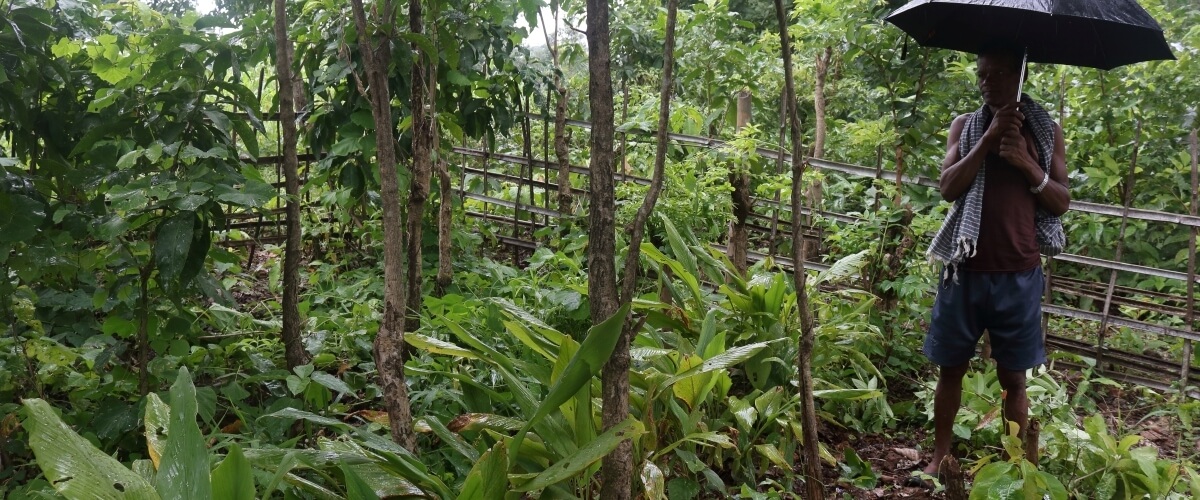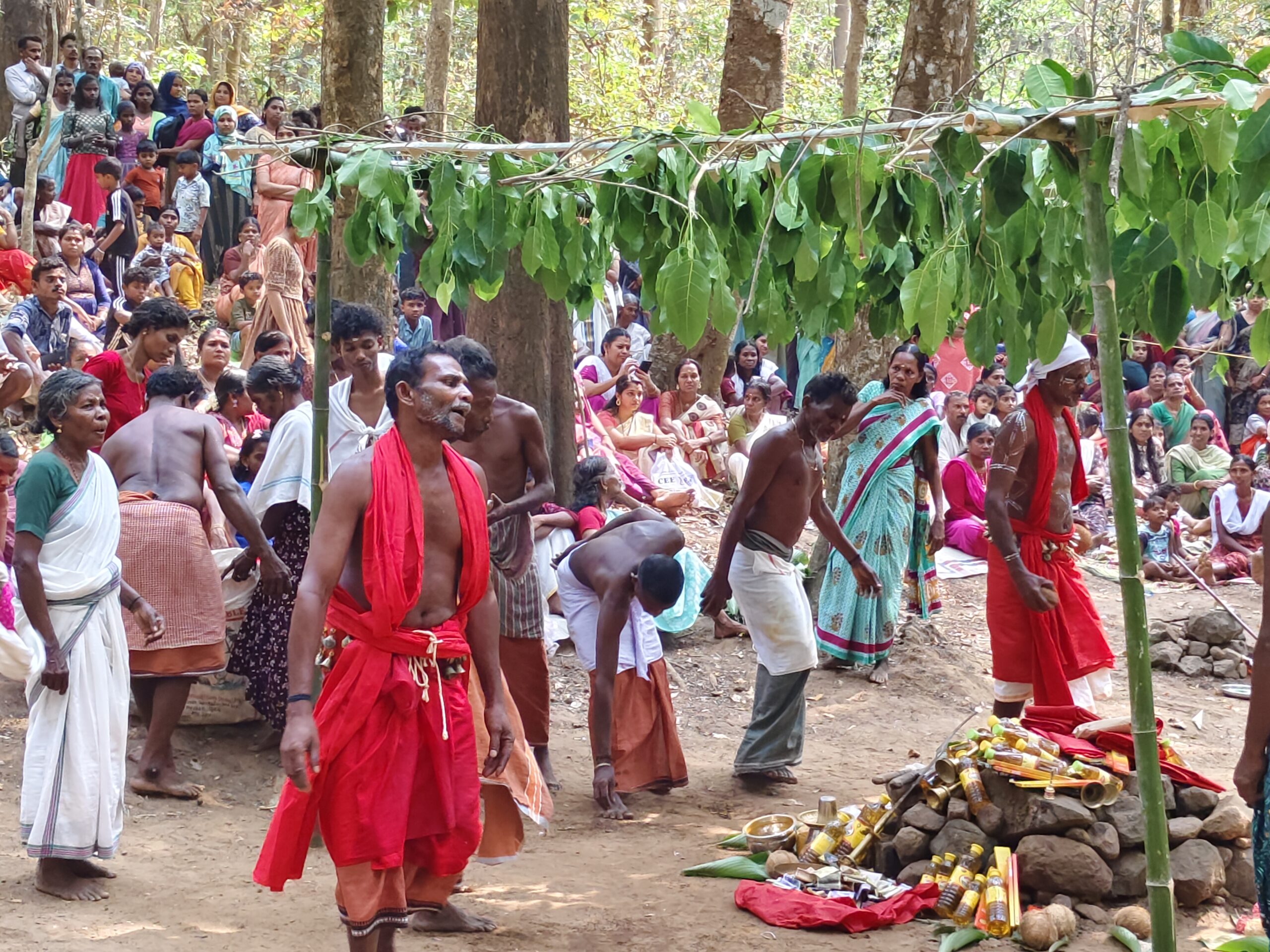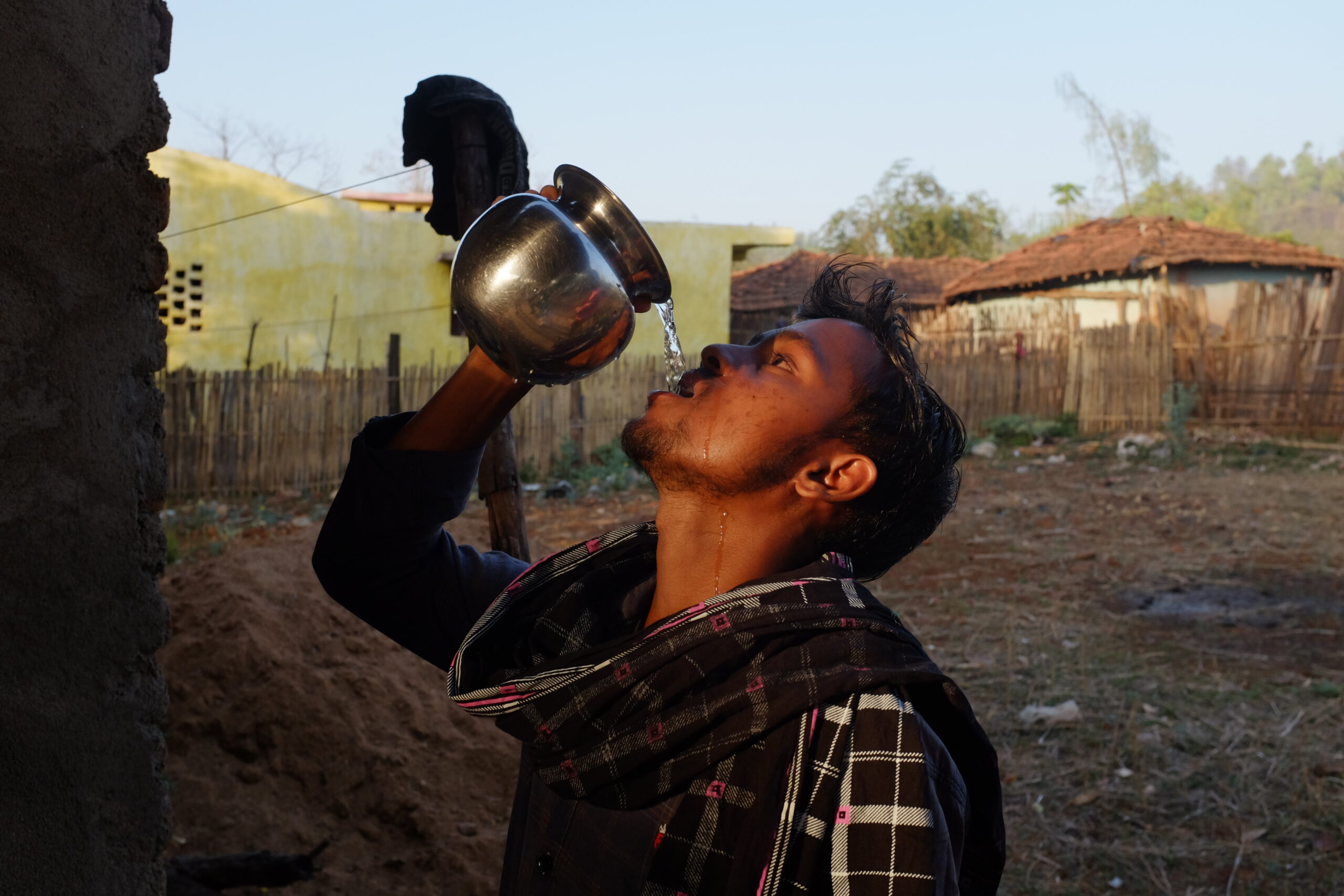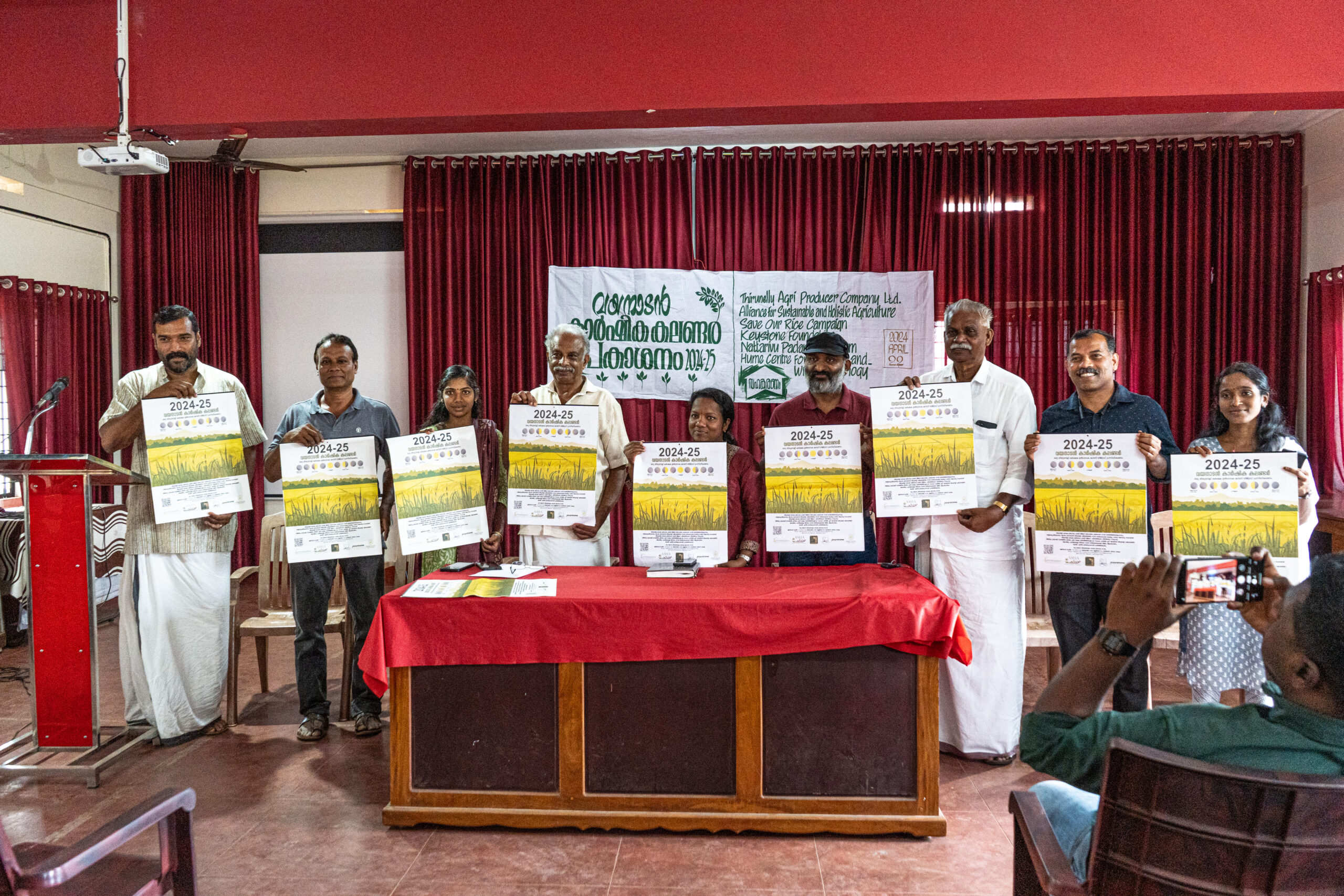The Pahariya people in the hills of Sundar Pahari, Godda District, Jharkhand continue to practice Jara-Kurwaa shifting cultivation based agricultural system. In the first year of cultivation known as Jara they carry out monocropping of legumes, primarily cowpea and rice bean. After one year of Jara the Pahariapeoplecarry out one to two years of their traditional mixed cropping cultivation practice of Kurwain the same plot. Currently, the principal seeds sown under Kurwa are Gangi/Maize, Ture/Pigeon pea, Tialo/Sorghum and Kakro/Rice bean. In addition, some millets like foxtail millet, pearl millet, and little millet; and a variety of vegetables are also sown.
After 2 to 3 years of cultivation, the land is left fallow for 3 – 5 years for regeneration and then again brought under cultivation. However, ideally, the minimum optimal fallow period should be 10 years, which has gradually declined over the years and brought in invasive species like Siam Weed (Chromolaena odorata) resulting in loss of biodiversity and nutrient depletion.
In order to extend the fallow period, Pahariya families have been encouraged to develop Forest Gardens through the cultivation of shade-tolerant crops aimed at generating additional livelihoods and sources of food. The fallows selected for Forest gardens are fenced to prevent grazing and are protected from fires. Thus, currently, fallows that are not contributing towards household cash flow would generate supplementary income along with the provision of food for subsistence needs through the cultivation of tuber species and a variety of uncultivated foods in the fallows. This is expected to incentivize the community to extend fallow periods and thus improve the sustainability of the Jara-Kurwa system.
In 2019 three pilot forest gardens were established in forest fallows of different ages in Chamdade, Telo and Ghagri villages. These initial efforts helped select the mix of shade-tolerant crops which currently include Haldi / Turmeric (Curcuma longa), Adrak / ginger (Zingiber officinale), Kachu/ Taro (Colocasia esculenta), Elephant Foot Yam (Amorphophallus paeoniifolius). In 2020 and 2021four more farmers from Bada Palma, Porkhani, Cheo and Gadsingla villages established forest gardens in their Kurwafallows. Currently, there are 7 forest gardens in operation.
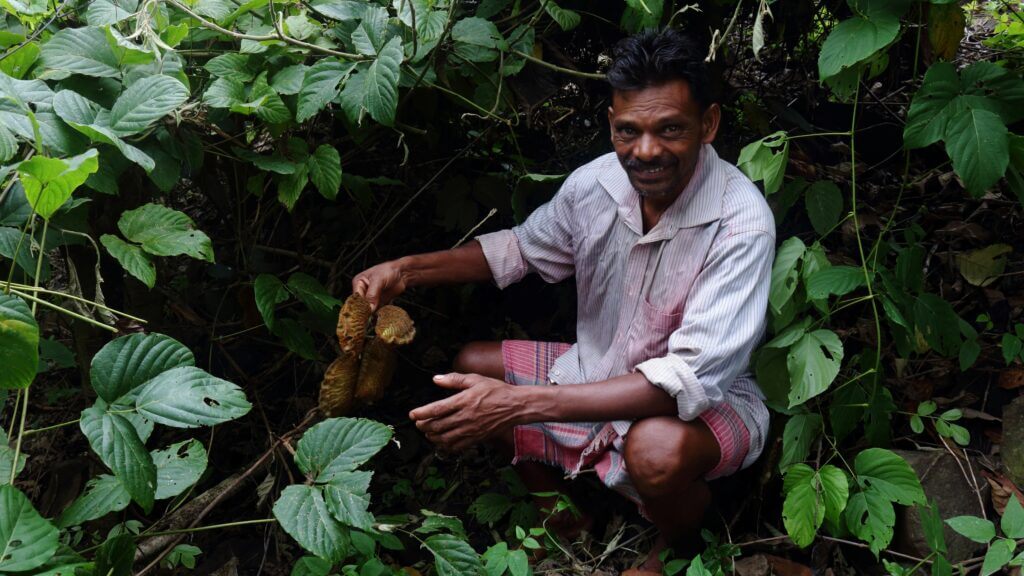
A discussion with Bameshwar focussing on the objectives of forest gardens revealed that he was aware that shorter fallow periods were preventing regeneration of natural vegetation which was one of the drivers behind the loss of valuable trees and plants which include vital wild foods and medicinal plants. He pointed out that he tries to leave his land fallow as long as possible but when his neigbours request him to allow them to carry out Kurwain his fallow lands he feels obliged to give in to their demands. He shared that he is doing his bit to promote the growth of trees and has planted numerous saplings which include species like Mango, Amla, Jamun and Guava.
He proudly showed us a patch in his fallow which was covered by creepers of a wild variety of Kursa/ velvet bean. Unlike the smaller cultivated variety, this variety had large, yellowish hairy pods which Bameshwar warned cause a lot of scratching and irritation if our skin comes in contact with it. This variety of Kursais prized for its medicinal properties, the seeds help treat joint pain and other pains, and the roots are also used to treat different diseases.
Bameshwar was proud that his fallows were one of the few places this wild variety of Kursais still found and with a twinkle in his eyes pointed out that “khalimera jungle men milega” (this can be found only be found in my forest area). Several varieties of wild tubers were also found in Bameshwar’s fallow, and they included EiheHalli / IkjoHalli, Chambia Halli, Churke Halli. Bameshewar even showed us a deep pit from which Eihe Halli had been recently extracted. He also showed us the wild variety of Kachugrowing alongside the variety that has been provided to him. While Bameshwar had cleared a portion of the plot, there were still a number of trees in the rest of the plot, and they comprised a variety of local species which included Putalo, Kurchi, Telo and Sidde.
We next visited Dharmendra Paharia’s forest garden in Bada Palma village. Dharmendra had decided to experiment with the Forest Garden concept in a small area of his 3 old Kurwafallow. Turmeric, ginger, Kachuand Kesor Halli had done particularly well in Dharmedra’s plot and even a few Ol plants had survived. The plot also had a variety of wild tubers like EiheHalli / IkjoHalli, Churke Halliand Napdu Halli. While showing us around his forest garden Dhrarmendra came across two wild mushrooms – Mako Osduand Ero Osdu, and he collected a gamcha full for his family.
Dharmendra shared that he was intrigued with the concept of cultivating crops under trees and so he decided to try it out in a small area. He was delighted that the crops he planted had done extremely well and he is happy to learn that it is possible to cultivate some crops under tree cover without having to fell the trees. He was not sure any of the crops would grow under the trees in his plot, but he has found that they do grow and in fact, they have grown well. With his trial plot proving a success Dharmendra now plans to establish a similar forest garden in a larger area in 2022.
On the 24th of September, we visited Surja’s own forest garden plot in Chamdade village and JaoraPahariya’s forest garden in Telo. Surja’s forest garden had been established in a Kurwafallow which was over 6 years old, and a number of large Sal trees had been left in this plot during the cultivation cycle. This was the first forest garden to be established in 2019 and this is the third consecutive year of cultivation. While in the first year a large number of different crops were experimented with, currently turmeric, ginger, kachu / taro, and kesorhalliare being cultivated and they have all been growing well alongside several trees which in addition to the dominant Sal (Shorearobusta) include Putalo, Telo, Sidde, Kurchi and Piyar.
Wild tuber varieties – Ikjo Halli, Churke Halli, were also present. Surja shared that he was happy with the productivity of different crops in his forest garden and would look to continue this approach for a number of years to come. The last forest garden we visited was that of JaoraPaharia in the adjoining village of Telo. This forest garden had also been established in a Kurwafallow which was around 6 years old.
Joara had been provided the same mix of crops and while we came across turmeric, ginger and Kesor Halli plants they were considerably smaller than those in the other forest gardens we had visited even though planting had been carried out at the same time. Surja felt that different conditions in different areas could be responsible for the variation in the performance of the crops provided and we aim to explore this in the years to come to develop an understanding of conditions that are conducive to forest gardens.
On the whole 3-4 varieties of crops have done well in the forest gardens and the farmers are happy with the results and have plans to continue cultivation and even expand the areas under forest gardens. There is a need for research into the role of different ecological and environmental conditions of the sites in the success of forest gardens. It was good to see that alongside the cultivated crops the forest gardens also yielded a variety of wild foods.

